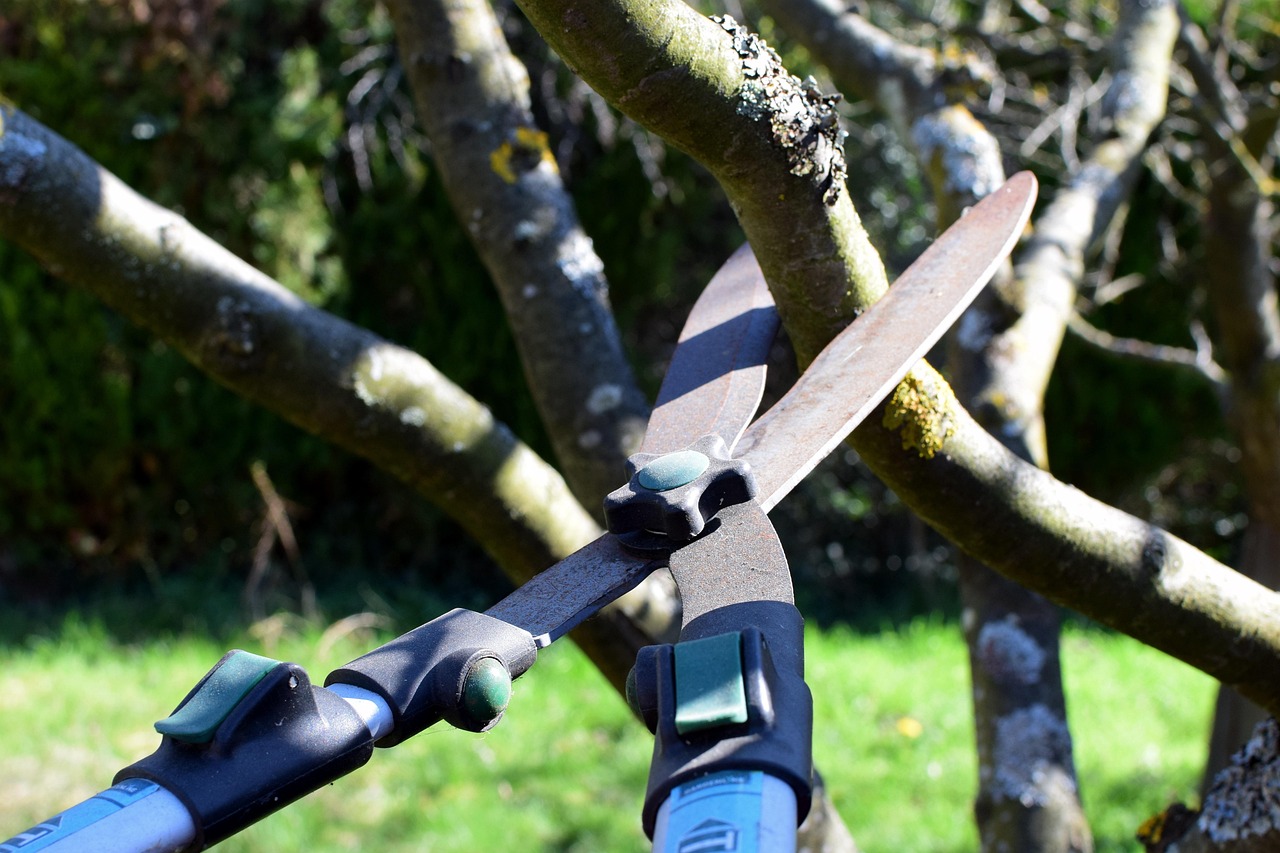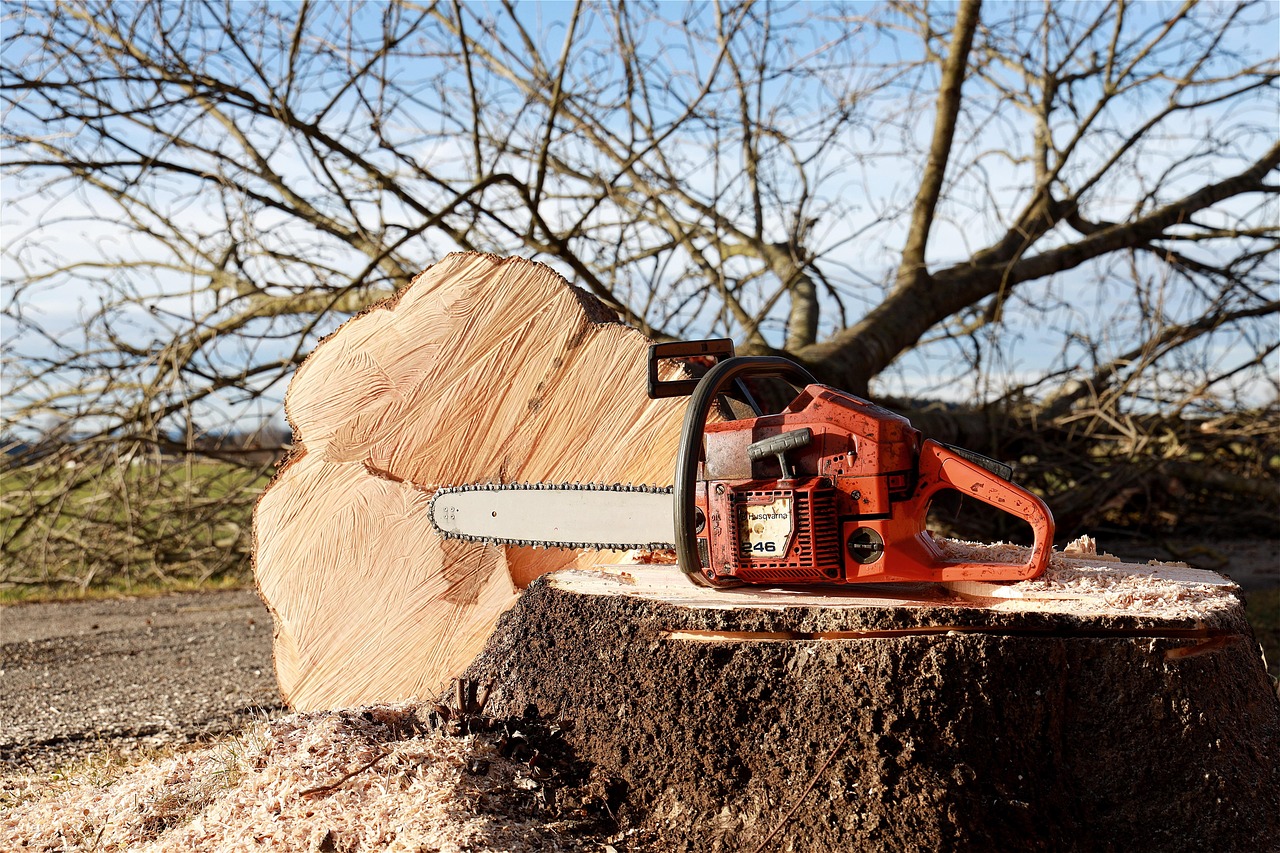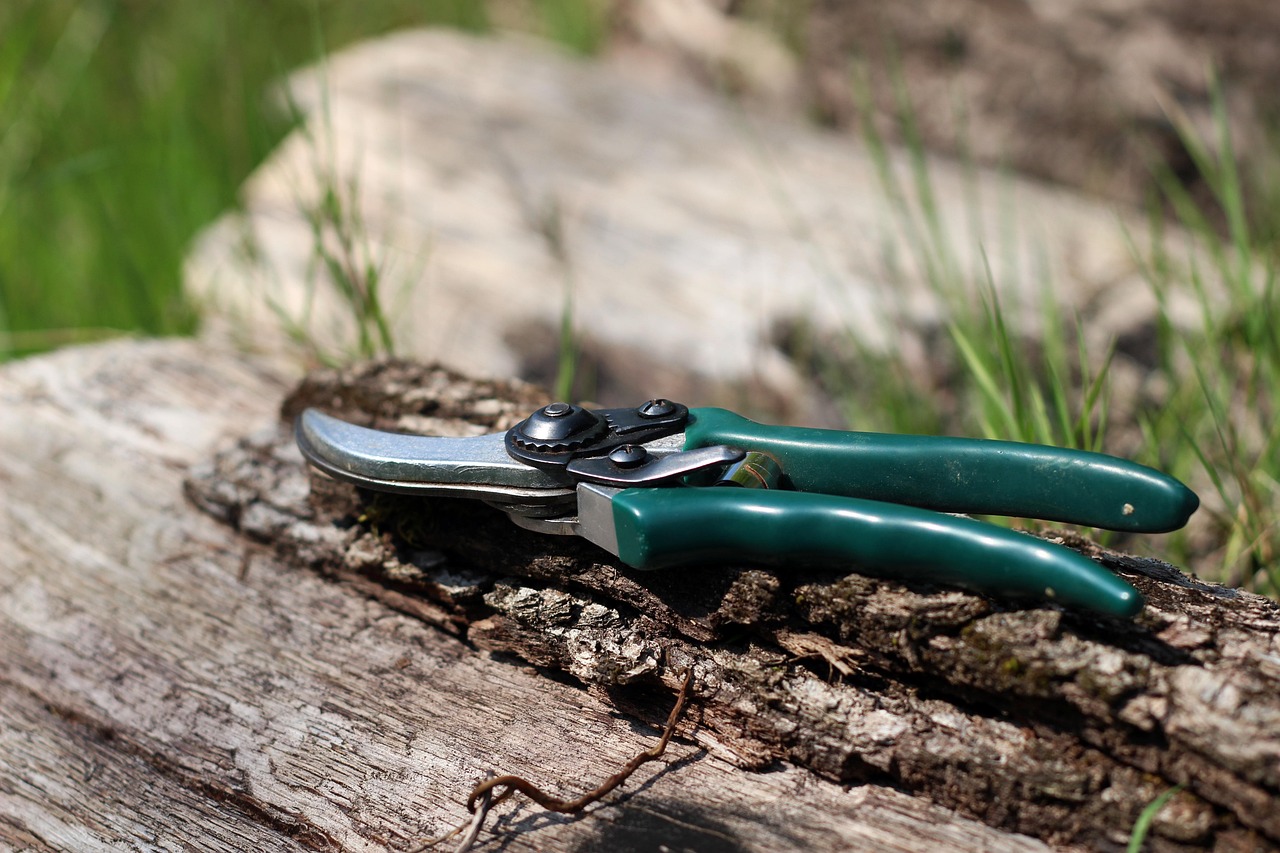Pruning offers numerous benefits that enhance the longevity of trees. It removes dead or diseased branches, encourages healthy growth, improves air circulation, and ensures better sunlight penetration, all of which contribute to a tree’s overall health and lifespan.
Trees are vital components of our ecosystems. They provide shade, improve air quality, and support wildlife. However, like any living organism, trees require care and maintenance to thrive. Pruning is one of the most effective ways to ensure the long-term health of trees. This practice involves the selective removal of specific parts of a tree, such as branches and roots. When done correctly, pruning can significantly extend a tree’s life and enhance its beauty.

Understanding the benefits of pruning is essential for both homeowners and professional arborists. Trees that are pruned regularly tend to be stronger and more resilient against pests and diseases. Moreover, proper pruning techniques can lead to better fruit production in fruit-bearing trees. Below are some key benefits of pruning:
- Improves Tree Structure: Pruning helps develop a strong structure by removing weak or crossing branches.
- Enhances Growth: It encourages new growth by allowing more sunlight to reach the inner parts of the canopy.
- Prevents Disease: Removing dead or diseased branches prevents the spread of diseases.
- Increases Air Circulation: Good air flow reduces humidity, which can help prevent fungal infections.
- Enhances Aesthetics: A well-pruned tree looks healthier and more attractive in landscapes.
Understanding Pruning Techniques
To reap the benefits of pruning, it is crucial to understand various pruning techniques. Different techniques serve different purposes and can positively affect tree health when applied appropriately. Here are some commonly used pruning methods:
- Crown Thinning: This technique involves selectively removing branches to increase light penetration and air circulation, which promotes healthy growth.
- Crown Raising: This method entails removing lower branches to increase clearance. It is particularly useful near roads or sidewalks.
- Crown Reduction: This involves reducing the overall size of the tree by cutting back branches. It helps manage trees that have grown too large for their surroundings.
- Deadwooding: Removing dead or dying branches helps prevent pests and diseases from infesting the tree.
The timing of pruning is also essential for maximizing its benefits. The best time to prune most trees is during their dormant season in late winter or early spring. This timing minimizes stress on the tree and allows for rapid healing once growth resumes. However, some trees may require specific timing based on their flowering cycles or other factors.

The Role of Pruning in Pest Management
Pests pose a significant threat to tree health. Many pests are attracted to weak or stressed trees. By maintaining a tree’s health through proper pruning, you can reduce its vulnerability to infestations. Pruning helps by:
- Removing Infested Branches: Pruning out infested areas can prevent pests from spreading throughout the tree.
- Promoting Strong Growth: Healthy trees are less likely to attract pests due to their robust structure.
- Reducing Harborage: By maintaining an open canopy, you limit places where pests can hide and thrive.
Environmental Benefits of Pruning
The environmental impact of healthy trees cannot be overstated. Well-maintained trees contribute positively to their surroundings by:
- Improving Air Quality: Trees filter pollutants from the air and produce oxygen.
- Supporting Biodiversity: Healthy trees provide habitats for various species, promoting ecosystem balance.
- Reducing Urban Heat: Trees help cool urban areas by providing shade and releasing moisture into the air.
In summary, understanding the benefits of pruning not only enhances the longevity of individual trees but also contributes to healthier ecosystems. As caretakers of our environment, it is our responsibility to ensure that trees receive the attention they need to thrive for generations to come.

The Importance of Timing in Pruning
Pruning is not just about cutting branches; timing plays a crucial role in its effectiveness. Understanding when to prune can enhance the benefits for tree health and longevity. Different species of trees have specific growth cycles, which determine the optimal times for pruning.
Pruning during the wrong season can stress a tree and lead to poor growth or even damage. In general, trees should be pruned during their dormant season, which usually occurs in late winter to early spring. This period allows trees to heal more effectively after cuts are made. For flowering trees, timing can vary based on whether they bloom on old or new wood.
Pruning Deciduous Trees
Deciduous trees, which lose their leaves in the fall, typically benefit from pruning in late winter or early spring before new growth begins. This approach encourages healthy growth as the tree awakens from dormancy. Here are a few common deciduous trees and their recommended pruning times:

| Tree Type | Optimal Pruning Time |
|---|---|
| Maple | Late winter to early spring |
| Oak | Late winter |
| Birch | Late winter |
| Cherry | After flowering |
Pruning Evergreen Trees
Evergreen trees retain their foliage throughout the year and generally require different pruning techniques. The best time to prune these trees is in late spring or early summer, after new growth has begun but before it hardens off. This timing helps minimize sap loss and promotes healthier new growth.
- Pine Trees: Best pruned in late spring, after new needles have emerged.
- Cedar Trees: Prune in early summer for optimal results.
- Spruce Trees: Late spring is ideal for reducing size without damaging the tree.
Common Mistakes to Avoid When Pruning
While pruning can significantly benefit tree health, improper techniques can lead to serious issues. It’s essential to be aware of common mistakes that can negatively impact a tree’s longevity.
Over-Pruning
One of the most prevalent mistakes is over-pruning, which can strip a tree of essential foliage and weaken it. Cutting too many branches can reduce the tree’s ability to photosynthesize, leading to stunted growth or death.
Wrong Tools and Techniques
Using incorrect tools or methods can also harm trees. Dull tools can create jagged cuts that take longer to heal, while improper cutting techniques can lead to damage. Always use sharp, clean tools and follow proper pruning techniques:
- Make clean cuts: Use sharp shears or saws for a clean cut.
- Avoid tearing: Do not pull branches; instead, make cuts that allow branches to fall naturally.
- Follow the branch collar: Always cut just outside the branch collar to promote healing.
The Role of Pruning in Tree Health Monitoring
Regular pruning serves as an excellent opportunity to monitor the health of a tree. During each pruning session, you can assess the overall condition of the tree and catch any potential problems early. Here are some signs to look for:
- Discoloration: Leaves that are yellowing or browning may indicate nutrient deficiencies or disease.
- Pest Infestations: Look for signs of pests such as holes in leaves or visible insects on branches.
- Mushrooms or Fungi: The presence of fungi can signal decay or root rot.
If any issues are detected during pruning, it is advisable to consult with a professional arborist for further evaluation and treatment options. Early intervention can save a tree from more severe damage and extend its lifespan significantly.
Seasonal Pruning Considerations
Each season brings unique challenges and opportunities for tree care. Understanding these nuances ensures that trees receive appropriate attention throughout the year.
Winter Care
During winter, trees are in a dormant state. While this is an ideal time for pruning, it is also essential to protect them from harsh weather conditions. Ensuring that trees are adequately mulched and hydrated will help them withstand cold temperatures.
Spring Awakening
As trees awaken in spring, they begin to grow rapidly. Pruning at this time should focus on removing dead or damaged branches. This practice helps prepare the tree for a robust growing season.
Summer Maintenance
In summer, growth slows down, making it easier to identify areas that need attention. Light pruning can be performed during this time but should be limited to minor adjustments rather than major cuts.
Fall Preparation
As fall approaches, it is time to prepare trees for winter. This includes removing any weak branches and ensuring the overall shape and structure are sound. Proper fall maintenance can set the stage for a healthy dormant period.
Pruning Techniques for Different Tree Types
Understanding the appropriate pruning techniques for various tree types is essential for maximizing the benefits of pruning. Different species have unique growth habits and structural characteristics, which determine how they should be pruned. Below are some common tree types and their specific pruning techniques.
Fruit Trees
Fruit trees require careful pruning to promote healthy growth and maximize fruit production. Proper pruning can help shape the tree, encourage sunlight penetration, and improve air circulation. Here are some key techniques for pruning fruit trees:
- Open Center Pruning: This technique creates a vase-like shape by removing the central leader, allowing sunlight to reach all parts of the tree.
- Central Leader Pruning: Common in apple trees, this method keeps a single leader while removing competing branches to promote strong vertical growth.
- Thinning Cuts: These cuts remove entire branches back to their origin, which helps improve light exposure and airflow.
Shade Trees
Shade trees, such as oaks and maples, benefit from pruning that focuses on maintaining a strong structure. Properly pruned shade trees can provide ample shade while remaining healthy. Important techniques include:
- Structural Pruning: This involves removing weak branches to create a strong framework, ensuring the tree can support its weight as it matures.
- Crown Cleaning: This technique removes dead or diseased branches, promoting overall health and preventing the spread of pests.
- Canopy Raising: Removing lower branches allows for better clearance and improves accessibility around the tree.
Ornamental Trees
Ornamental trees are often pruned to enhance their aesthetic appeal. The focus is typically on shaping and encouraging flowering. Key techniques include:
- Heading Cuts: These cuts shorten branches to encourage bushier growth and create a fuller appearance.
- Pinching: This technique involves removing the tips of young shoots to promote branching and fuller foliage.
- Selective Pruning: Carefully removing specific branches can enhance the tree’s natural shape and encourage blooming.
The Benefits of Professional Pruning Services
While many homeowners can perform basic pruning, hiring professional arborists offers several advantages. Professionals have specialized knowledge and tools that can lead to better outcomes for tree health and longevity. Here are some benefits of using professional pruning services:
- Expertise: Arborists understand tree biology and growth patterns, allowing them to make informed decisions about pruning techniques.
- Safety: Professionals are trained to handle potentially dangerous situations, such as climbing tall trees or working near power lines.
- Proper Equipment: Arborists have access to specialized equipment that ensures clean cuts and minimizes damage to trees.
- Pest and Disease Identification: Experienced arborists can spot early signs of disease or pest infestations during pruning sessions.
Understanding Tree Growth and Response to Pruning
Trees respond to pruning in various ways, depending on their species, age, and overall health. Understanding these responses can help in making informed pruning decisions. Here are some key aspects of tree growth related to pruning:
Healing Process
When a tree is pruned, it initiates a healing process. Trees produce callus tissue around the cut areas to protect themselves from pests and diseases. The speed at which a tree heals can depend on several factors:
- Tree Species: Some species heal faster than others due to their natural growth characteristics.
- Cut Size: Smaller cuts generally heal more quickly than larger ones.
- Pruning Season: Pruning during the dormant season allows trees to heal more efficiently as they enter their active growth phase in spring.
Growth Hormones
Trees rely heavily on growth hormones known as auxins, which play a crucial role in directing growth patterns. When a branch is removed, auxins redistribute throughout the tree, often leading to increased growth in nearby buds. This phenomenon is known as “vigorous re-sprouting” and can be beneficial if managed properly.
Stress Responses
While pruning is beneficial, excessive or improper pruning can stress a tree. Stress responses may include:
- Increased Susceptibility: Stressed trees are more vulnerable to pests and diseases.
- Reduced Growth: Over-pruned trees may exhibit stunted growth due to loss of foliage needed for photosynthesis.
- Poor Flowering or Fruiting: Trees that are pruned incorrectly may produce fewer flowers or fruits in subsequent seasons.
The Economic Benefits of Proper Pruning
The economic impact of maintaining healthy trees through proper pruning extends beyond aesthetics. Healthy trees can increase property values and provide significant savings over time. Here are some economic benefits associated with proper tree care:
- Increased Property Value: Well-maintained trees enhance curb appeal, leading to higher property values.
- Energy Savings: Trees strategically placed around homes can reduce cooling costs by providing shade.
- Avoiding Costly Repairs: Regular pruning prevents branch failures that could damage property or cause injury, reducing liability costs.
- Biodiversity Benefits: Healthy trees support diverse ecosystems, contributing to local economies through tourism and recreation.
A commitment to regular tree maintenance through proper pruning is not just about aesthetics; it’s an investment in the longevity of trees that pays off for both property owners and the environment as a whole.
In addition to the aesthetic and economic benefits of pruning, it is essential to consider the ecological advantages that come from maintaining healthy trees. Trees play a pivotal role in their environment, contributing to air quality, water conservation, and climate stabilization. Proper pruning practices support these functions by promoting robust growth and resilience against environmental stressors.
Ecological Impact of Healthy Trees
Healthy trees are vital for maintaining ecological balance. They contribute significantly to biodiversity and the overall health of ecosystems. Here are some ecological benefits associated with well-pruned trees:
- Carbon Sequestration: Trees absorb carbon dioxide and release oxygen, helping mitigate climate change. Well-maintained trees can capture more carbon due to their increased health and growth rates.
- Soil Conservation: Tree roots help prevent soil erosion, maintaining soil health and fertility. Healthy trees promote better root structures, which stabilize the soil.
- Water Management: Trees play an essential role in managing water cycles. They help regulate water runoff and reduce flooding by absorbing excess rainwater.
- Wildlife Habitat: Pruning supports healthy foliage and fruit production, providing food and habitat for various wildlife species, which in turn enhances local biodiversity.
Community Benefits of Tree Maintenance
Beyond individual property owners, tree maintenance through proper pruning has significant community benefits. Communities with healthy trees enjoy:
- Enhanced Quality of Life: Green spaces with well-maintained trees improve mental health and well-being, providing spaces for relaxation and recreation.
- Increased Property Values: Communities with abundant trees and green areas often see higher property values, benefiting local economies.
- Community Cohesion: Green spaces can serve as gathering areas for community events, fostering social connections among residents.
- Educational Opportunities: Urban forests can be used as educational tools for schools, teaching students about ecology, botany, and environmental stewardship.
The Importance of Education and Awareness
To maximize the benefits of pruning and tree care, public awareness and education are essential. Community programs that educate residents about tree maintenance can foster a culture of care and responsibility towards urban forestry. Here are some suggestions for promoting tree care education:
- Workshops and Seminars: Hosting events where experts share knowledge about tree care can empower community members to take action.
- School Programs: Incorporating tree care into school curriculums can raise awareness from a young age and encourage future generations to value their environment.
- Volunteer Opportunities: Organizing community tree planting and maintenance days allows residents to engage hands-on with their local environment.
Final Thoughts
Pruning is an essential practice that goes beyond simple aesthetics; it is crucial for the longevity and health of trees. By understanding the benefits of proper pruning techniques, timing, and species-specific needs, homeowners and communities can ensure their trees thrive for years to come. The economic, ecological, and community benefits associated with healthy trees highlight the importance of regular maintenance through pruning.
The investment you make in tree care today will pay off in numerous ways—enhancing property values, supporting local ecosystems, and promoting community well-being. Furthermore, educating ourselves and others about the significance of tree maintenance fosters a culture of care that can lead to healthier urban forests and a more sustainable environment.
Ultimately, embracing responsible tree care practices like pruning is a commitment to preserving our natural heritage. As we strive for greener, healthier communities, let us remember that every cut made with care contributes to a brighter future for our trees and the many benefits they provide.
